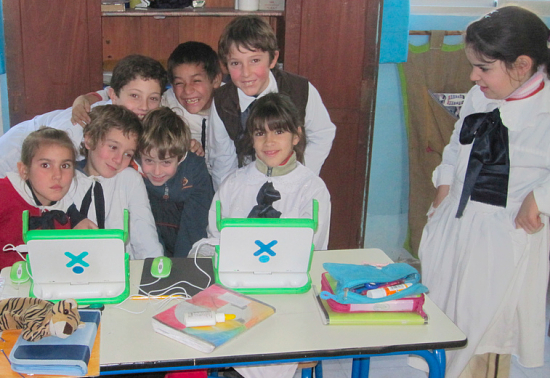
.
If there's one country that has taken the notion of "one laptop per child" very seriously then it's Uruguay.
As mentioned in the OLPC in South America introduction to date the country has distributed approximately 400,000 of OLPC's XO-1 laptops, thereby equipping every single pupil and 18,000 teachers of its public primary education system with a laptop. Not stopping there, the country is now in the process of rolling out 100,000 laptops - 90,000 of them being OLPC XO-1.5 HS machines, with the remaining 10,000 being Intel Classmates - in its secondary education system.
Switzerland of South America
It's not hard to argue that in many ways Uruguay presented the perfect environment for a country-wide 1-to-1 computing in education project. Pretty much regardless of which metric one looks at, Uruguay is always in the upper segments, particularly within the South American context:
- Literacy Rate: 98%
- Human Development Index (HDI): 0.865
- GDP per capita: $10,079 (2009)
- Internet users: 40 per 100 (2008)
Especially when it comes to primary education, Uruguay provided a stable foundation to build on given that practically every pupil finishes the six years of primary school and as a result literacy levels are very high. At the same time the physical infrastructure in terms of reliable access to electricity and the Internet also existed in many parts of the country.
It's within this context that then-president Tabaré Vázquez first announced "Plan Ceibal" - Ceibal being both the acronym for Conectividad Educativa de Informática Básica para el Aprendizaje en Línea - Basic educational connectivity for online learning as well as being an emblematic Uruguayan plant. The corresponding presidential decree was signed in mid-April 2007 and in then-president Vázquez's own words:
"[Plan Ceibal's] longer-term objective is to promote social justice by promoting equal access to information and communication tools for all our people."
Distributing the aforementioned 400,000 XO-1 laptops was thereby the first step of a larger process, and that ambitious first goal was completed at the end of 2009. Hence Uruguay is the first country to achieve full device saturation in its public primary school system. This makes the county and excellent example of having transitioned from the "should we do it" and "which technology do we use" stage to the more important, and more complicated, question of "how do we do it"?
Status quo
Now as indicated in the introduction the main indicators of Plan Ceibal I was looking at during the two weeks I spent in Uruguay in July are what I call the six criteria for successful implementations of ICT for Education projects in developing countries.
Wanna see how Uruguay ranked? Then read OLPC in Uruguay: Impressions of Plan Ceibal's Primary School XO Laptop Saturation on Educational Technology Debate. You can comment on the post there too.
This OLPC in Uruguay is part of an overview of OLPC in South America, a first-hand report of XO laptop deployments in Uruguay, Paraguay, and Peru by Christoph Derndorfer.

